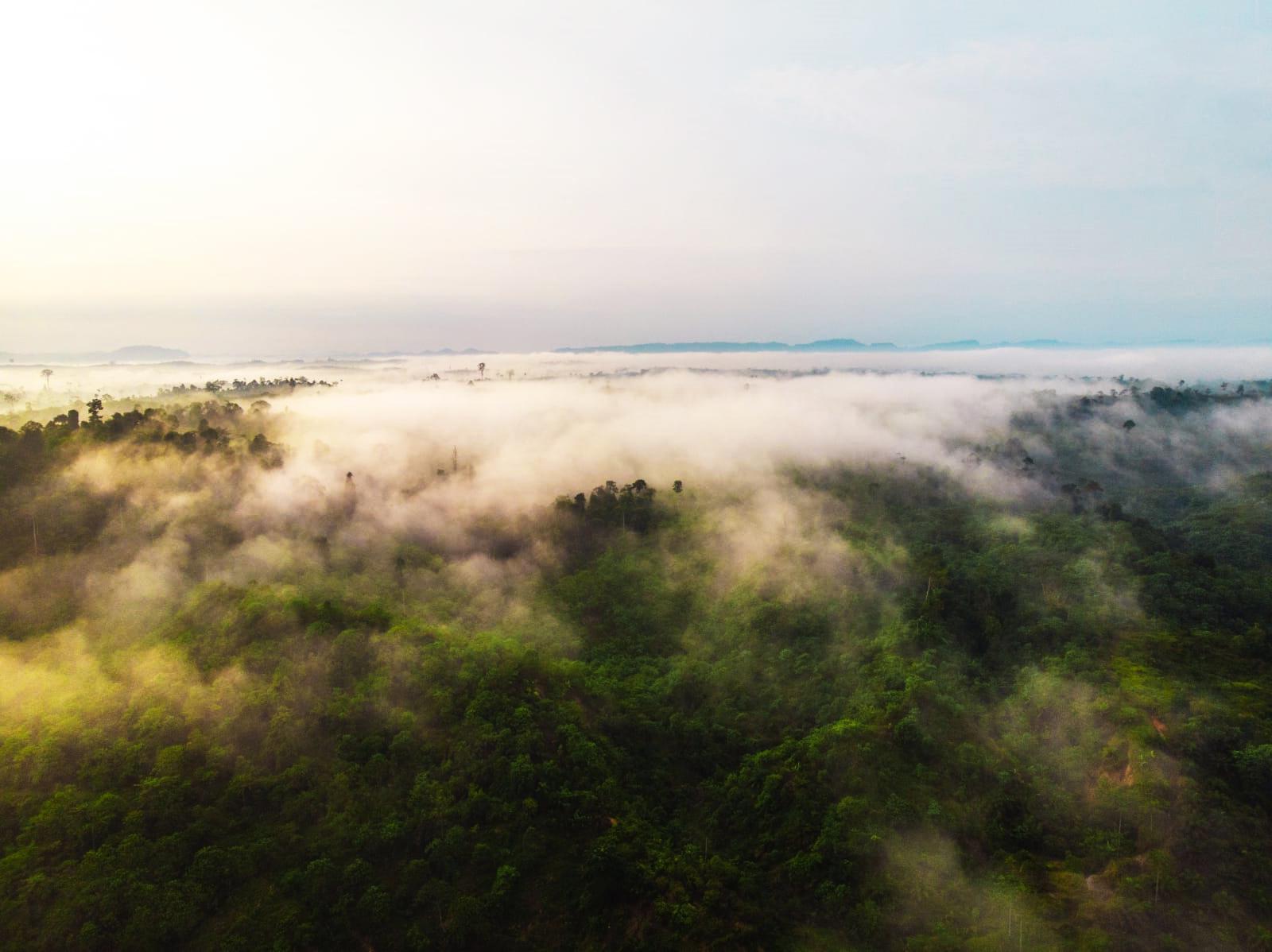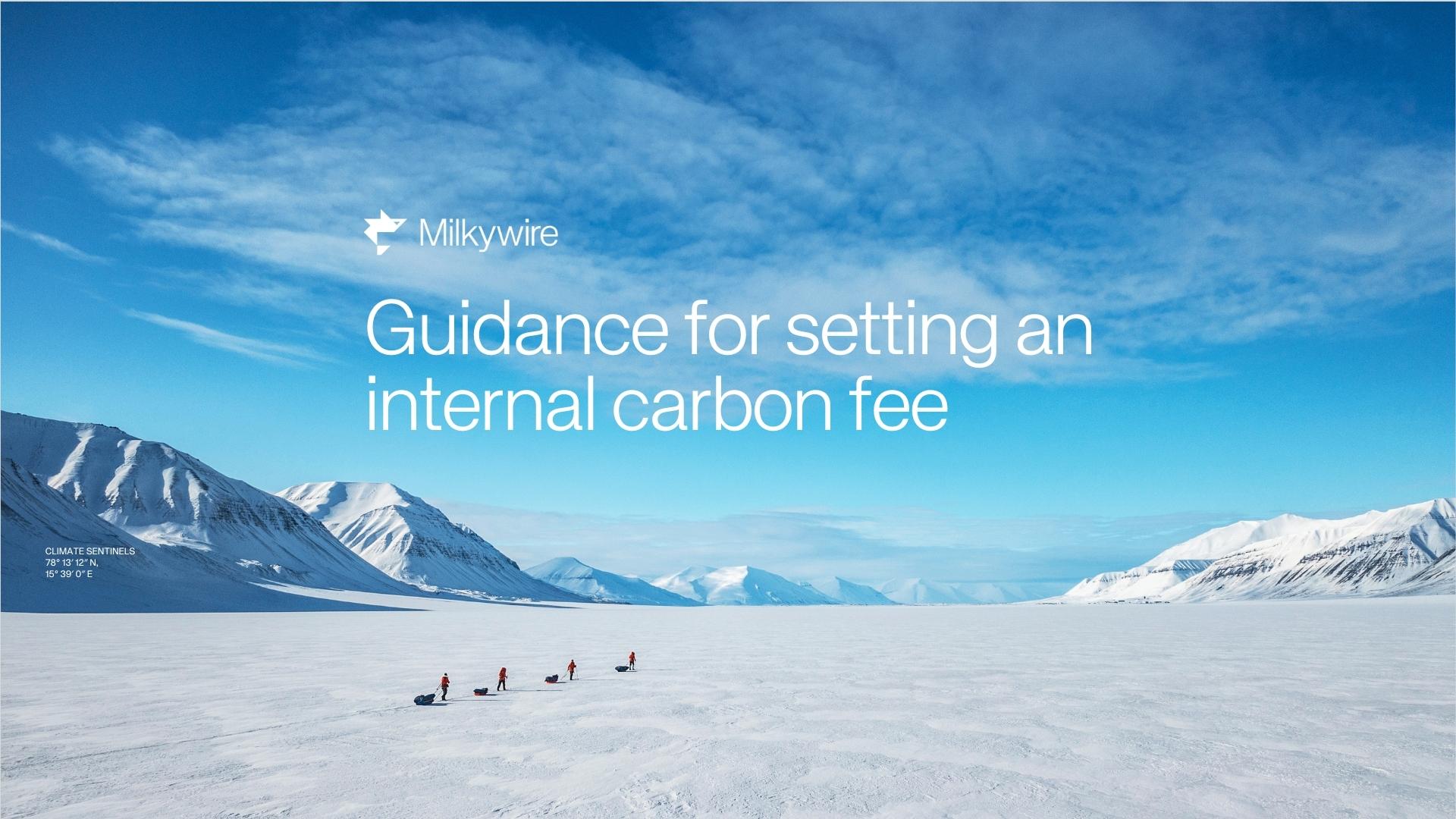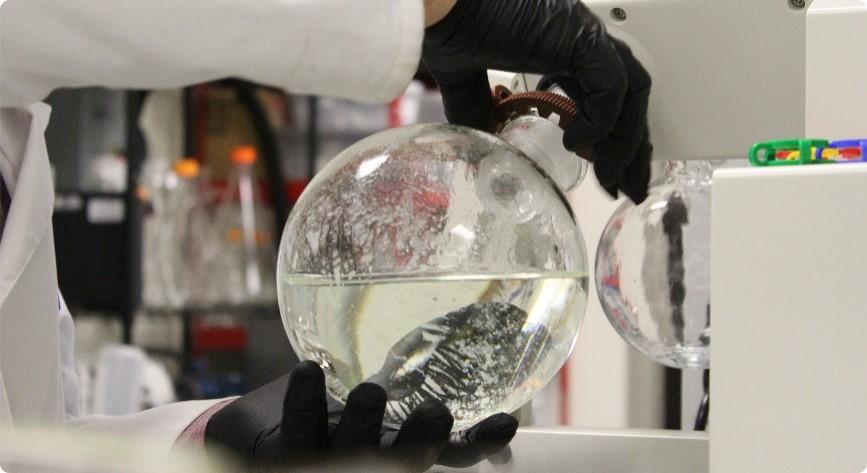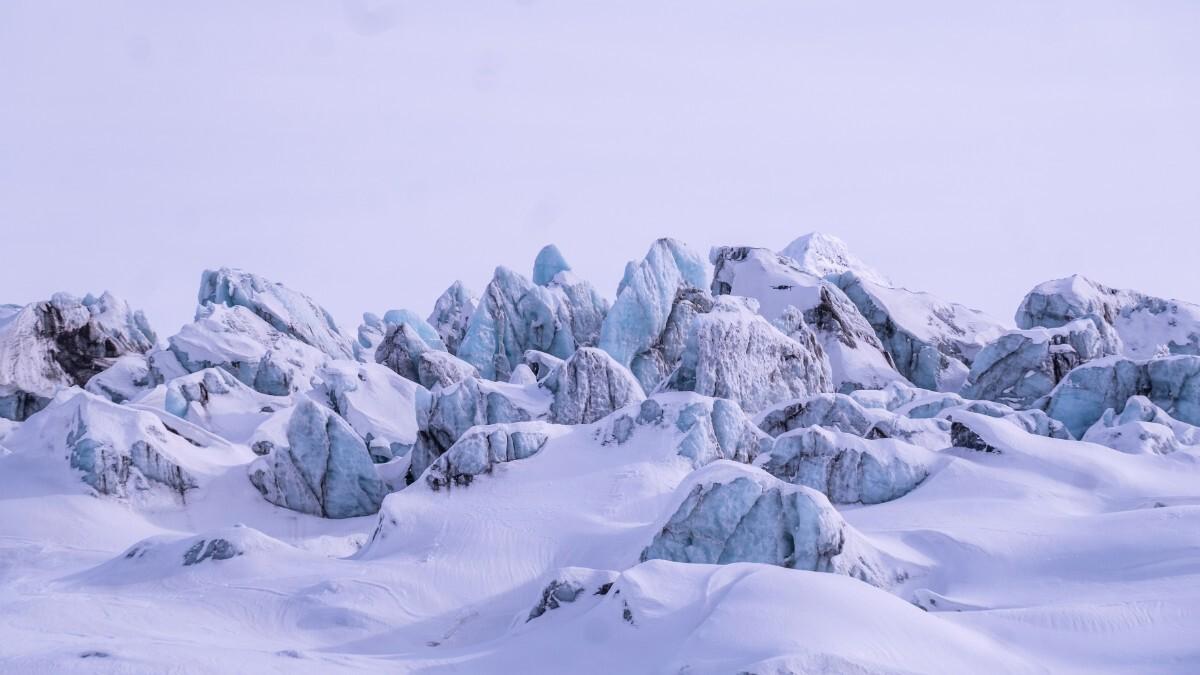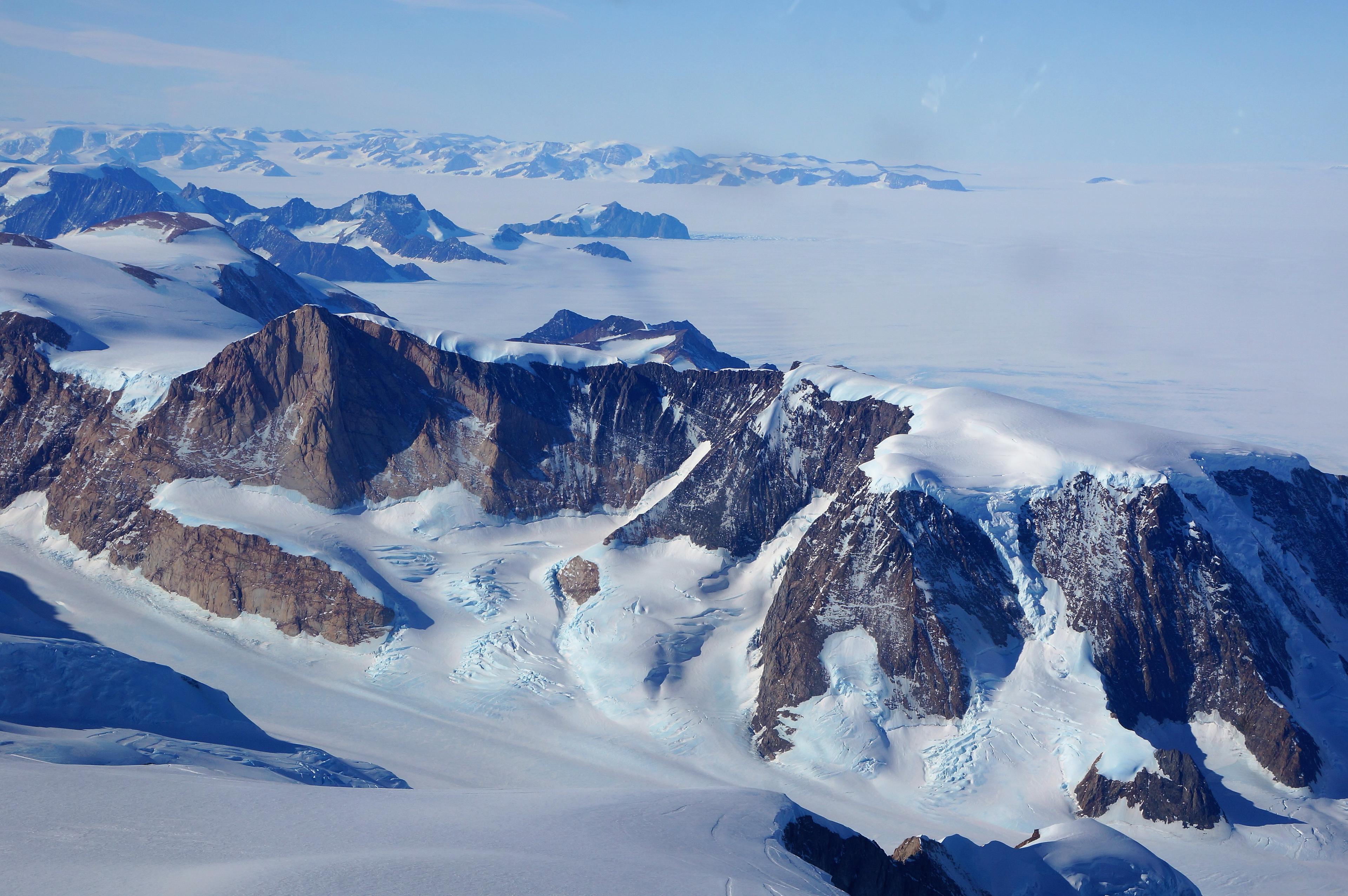Climate Transformation Fund
A best-practice alternative to carbon credits: a curated portfolio of high impact projects driving global net-zero

Designed for sustainability leaders
Launched in 2021, the Climate Transformation Fund (CTF) is a premier solution for companies committed to going beyond emission reductions. This portfolio of high-impact, innovative projects is designed to accelerate global net-zero goals. Aligned with SBTi’s Corporate Net-Zero Standard, the CTF aims to maximize long-term CO₂ reduction or removal per dollar spent. It focuses on innovative CDR technologies, effective nature restoration, and leveraging policy to drive large-scale decarbonization. These efforts are supported by three critical pillars:
Durable carbon removal
Decarbonization
Protecting and restoring nature



What should a best-in-class company do for our climate?
Leading frameworks like SBTi, WWF/BCG, and Gold Standard/Milkywire endorse a four-step approach to credible climate action. Responsible companies go beyond emission reductions and implement an internal carbon fee to support climate projects beyond their own value chains. By funding these external climate projects, companies can drive innovation and internalize environmental costs in order to reach global net-zero.
Account, disclose, and reduce emissions
Measure your climate footprint, including Scope 1, 2, and 3 emissions. Align with Science-Based Targets (SBT) to reduce and mitigate CO₂ intensity.
Price emissions with an internal carbon fee
Set an internal carbon fee to fund high-impact projects. Read our guide to learn how.
Fund high-quality climate action
The CTF helps companies support carbon removal, decarbonization, and nature restoration projects to reach global net-zero.
Report back and make honest claims
Communicate your contributions and impact to stakeholders, showcasing your commitment to climate-positive goals.

Climate Transformation Fund pillars
The Climate Transformation Fund encompasses a wide array of projects, each addressing different themes and approaches. We focus on three main pillars, which support the portfolio's overall framework. Within each pillar, various projects pursue similar goals through different methods.
Decarbonisation

There is a need to support efforts that can reduce emissions. Change is not happening fast enough on its own. A high-impact way of accelerating emission reductions is by supporting effective organizations influencing decision-makers to implement more ambitious climate policies. Another way is to support innovation in new fossil-free energy solutions in cases where market forces are not providing the necessary funds.
Co-benefits: Projects that benefit marginalized communities, provide social co-benefits, or aid ecosystems beyond carbon storage are prioritized.
Climate impact: Projects are assessed on their potential direct or indirect effect on avoided emissions.
High additionality: Projects unlikely to occur without support are prioritized, avoiding those similar to already funded initiatives.
Catalytic effect: Projects are evaluated for their potential to scale and create impact beyond their immediate scope, especially as pioneering solutions.
This initiative introduces Electric Three-Wheelers (E3Ws) in Pakistan, replacing traditional three-wheelers with E3Ws with swappable batteries. The project implements solar- and biogas-powered battery swapping stations in peri-urban agricultural areas. Using the energy efficiency of E3Ws the project demonstrates a scalable model for sustainable mobility in Pakistan.
Durable carbon removal (CDR)

CDR is one of the most crucial solutions to reach and maintain net-zero emissions and limit global warming. To counterbalance fossil emissions from the long carbon cycle, the carbon removed needs to be stored durably. While solutions for durably removing carbon are still nascent, pre-purchasing carbon removal from startups can help kickstart the sector, making it an affordable and climate-relevant solution in the future. When credits or certificates are bought, they will be retired, meaning they cannot be resold and will not be counted as financial instruments.
High additionality: Projects are evaluated on their ability to remove tonnes that wouldn't occur without funding.
Potential: Projects are assessed for their potential to become a significant solution to the climate crisis.
Catalytic effect: Projects are prioritized if donations or purchases lead to greater growth of the method beyond just the purchased tonnes.
Co-benefits: Projects are given higher priority if they benefit people in poverty or help ecosystems beyond carbon storage.
Canadian TerraFixing captures CO2 from the air via a novel DAC process that employs adsorption technology. It is designed to operate in cold, remote locations where extracting CO2 from the air is easier and cheaper and where the scalability of renewable wind power is immense.
Nature protection and restoration

Protecting and restoring nature is of paramount importance for addressing climate change. Deforestation and forest degradation result in substantial carbon emissions as forests are destroyed. Preserving the carbon stored in existing ecosystems and restoring carbon to areas that have lost it are critical steps in mitigating climate change. These actions not only help reduce greenhouse gas emissions but also have significant co-benefits for both human societies and biodiversity.
Climate impact: Projects that protect or increase carbon stocks in nature.
Catalytic effect: Projects that can be replicated, spread to new communities, or inspire innovative solutions are preferred.
Track record: Projects with a strong history of successful implementation outcomes are prioritized.
Co-benefits: Projects are prioritized if they benefit marginalized communities, contribute to environmental justice, or help ecosystems beyond carbon storage.
This project focuses on large-scale seagrass ecosystem restoration in Western Australia using robotic technology. Ulysses is working in collaboration with the University of Western Australia. The group aims to restore thousands of hectares of seagrass meadows, which can store large amounts of carbon annually. The project develops innovative robotic technology for seed collection, planting, and monitoring. Ulysses, in partnership with UWA, provides a novel, scalable method with significant co-benefits for carbon sequestration, biodiversity, and coastal ecosystems.

Decarbonisation
Nigeria
Africa is the continent with the greatest need for more energy. Clean Air Task Force has created an African energy and climate innovation program to lay the foundation for a clean-energy future.

Durable carbon removal (CDR)
United States
Holocene has developed a continuous, low-temperature, thermochemical direct air capture technology, which combines the best of both traditional DAC approaches. The continuous, liquid absorption system coupled with a solid, low-temperature desorption, brings the benefits of affordability, scale, and flexibility inherent in such an approach. Holocene's proprietary combination of organic sorbents unlocks this whitespace, which can be more scalable and affordable than alternatives.

Nature protection and restoration
Tanzania
This project develops a mobile app for regreening techniques like Farmer Managed Natural Regeneration (FMNR). The app delivers real-time, location-specific advice directly to farmers' phones. This approach reduces intervention costs by eliminating the need for in-person visits to every location. We already support Justdiggit’s regular work since 2021, and now added this project because it builds on proven FMNR methods, increasing cost-efficiency and potential for rapid scaling in dry landscapes.

At Northzone, they know their climate responsibility goes beyond "neutrality." With Milkywire's help, they support leading climate projects transforming the industry though the Climate Transformation Fund.


Milkywire is proud to be a strategic partner of Klarna's sustainability initiatives since 2021, enabling Klarna to maximise their impact throughout their digital platform.
How we ensure quality and scientific rigor
We have a rigorous selection process for new projects, based on a call for proposals. We vet projects according to our framework evaluating innovation, potential and scalability together with integrity, durability, safety, legal compliance, and measurable impact. Our external advisory group reviews these evaluations, helping us prioritize projects that deliver significant environmental and social benefits while ensuring that our support is both necessary and impactful.
Get notified when the call for proposals opens
The Climate Transformation Fund is not currently accepting proposals. We will open a call for proposals in December 2024 for projects joining the CTF in 2025. We seek innovative projects focused on nature protection, decarbonization, and carbon dioxide removal. Our mission is to support groundbreaking initiatives that significantly impact the fight against climate change and advance global net-zero emissions.

Why a portfolio approach?
By supporting the Climate Transformation Fund, companies contribute to a diverse range of solutions needed to combat climate change. This increases the likelihood of reaching global net-zero and reduces investment risk by spreading contributions across various high-impact projects.
How do you find projects?
Annually, we invite interested projects to apply for our Climate Transformation Fund by issuing a call for proposals. We select about 30 projects that best meet our criteria for maximum impact. Our latest call attracted over 1,000 applications, with a selection rate of about 2%.
Why choose this approach over carbon credits?
Choosing Milkywire's curated portfolio offers a diversified, scientifically-backed selection of projects, unlike direct carbon credit purchases which often lack this breadth and strategic alignment. It also mitigates the risk of greenwashing claims, demonstrating a commitment to supporting the most effective climate projects.
Do you sell carbon credits or offsets?
The CTF does not issue carbon credits or claim offsets. Our focus is on long-term impact. This can involve purchasing carbon removals at higher prices today to make them cheaper in the future or supporting projects to protect forests and plant trees. We quantify the impact of contributions in our reporting, but the actual effect of a tonne of carbon avoided or removed varies between solutions.
Why focus on durable carbon removal (CDR)?
Durable carbon removal involves technologies and projects that remove CO₂ from the atmosphere and store it for long periods (hundreds to thousands of years). With over 90% of global GDP committed to net-zero, durable carbon removal will be essential to meet these targets. However, the CDR market is still developing and requires significant funding to meet future demand.
What is a credible internal carbon fee?
A credible carbon fee varies, but one approach is to base it on the cost of durably removing and storing CO₂ from the atmosphere, which is currently several hundred US dollars per tonne. The New Climate Institute suggests 100 euros per tonne as a credible level for corporate climate contributions. This can differ based on company needs. Contact us for help in determining an appropriate carbon fee for your organization. Read more on setting an internal carbon fee.
How do we communicate the impact funded through Milkywire?
Transparency is key. Instead of claiming to offset a specific number of tons, an internal carbon fee allows you to tax your own emissions, providing an incentive to reduce them, and explaining where the funds are spent. For example, you can learn more about how Northzone communicates their impact on the Northzone sustainability page.
Ready to make real impact?
Discover how our innovative portfolios can elevate your commitment to global sustainability. Partner with us to make a lasting impact.
Join our newsletter and be the first to know about the exciting progress in our portfolios, expert insights, and the latest updates from our platform.



















